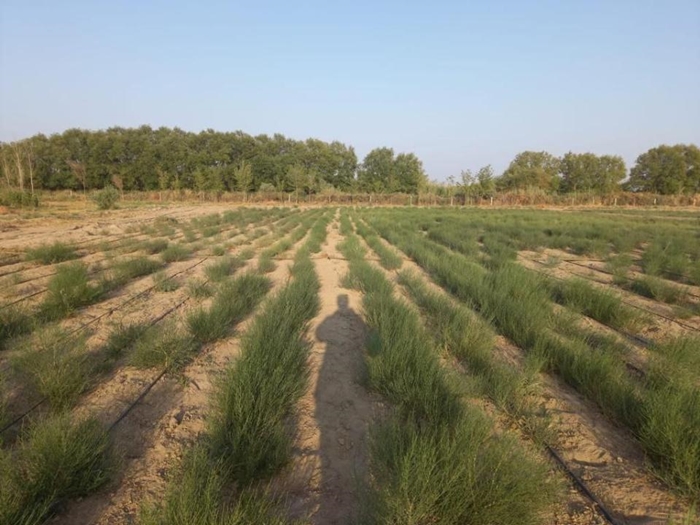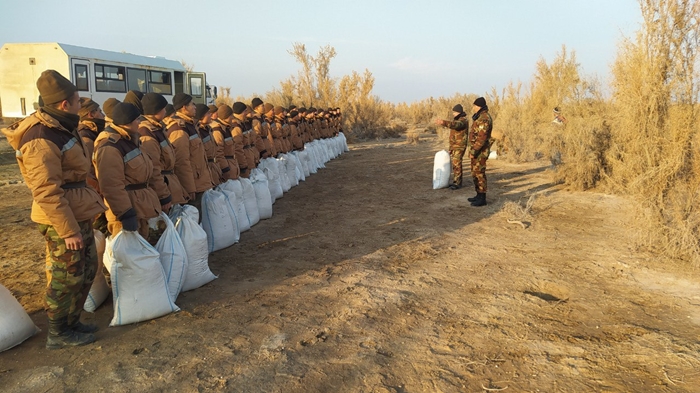Kazakhstan and Uzbekistan, two Central Asian nations deeply affected by the Aral Sea’s environmental tragedy, are spearheading remarkable efforts to green the vast, exposed seabed. Their determined strides in reforestation hold immense promise for mitigating the ecological disaster’s negative impact on the region and beyond.
Kazakhstan has set a target for 2024: sowing 275,000 hectares of the Aral seabed with hardy, drought-resistant plants like saxaul and halophytic species such as karabak and sarasazan. This builds upon their impressive work over the past three years, with over 544,500 hectares of land already afforested. By 2025, they aim to establish a expanse of saxaul plantations across 1.1 million hectares.
Saxaul plantations are at the bottom of the Aral Sea. Kazakhstan. (Photo – Ministry of Ecology and Natural Resources of Kazakhstan)
Recognizing the unique challenges posed by the Aral Seabed’s high salinity, particularly in comparison to the Uzbekistan side, Kazakhstan’s Ministry of Ecology is employing science-driven strategies. To create a forest at the bottom of the Aral Sea, soil surveys were conducted on an area of 753,000 hectares. To further accelerate the growth and survival of saplings, a 33-hectare forest nursery on the seabed will be created.
Uzbekistan, too, is actively resuming its greening efforts on the dried-up seabed. Joining forces with the Ministry of Emergency Situations, aviation technology will be utilized to efficiently sow saxaul seeds across vast areas.
“In previous years, the forces of the Ministry of Emergency Situations and the Forestry Agency created huge forests of desert plants on the territory of the drained bottom,” Uzbek media wrote with reference to the message of the Ministry of Emergency Situations.
The Ministry of Emergency Situations of Uzbekistan is preparing to sow saxaul. (Photo – Ministry of Emergency Situations of Uzbekistan)
During the autumn landscaping nationwide campaign “Yashil Makon” (Green Land), greenery were planted on an area of 28 thousand hectares in the Muynak district and in the desert areas of the Aral Sea region.
These proactive efforts by Kazakhstan and Uzbekistan are particularly crucial in the face of climate change, which exacerbates the Aral Sea’s legacy. Rising temperatures and unpredictable precipitation patterns fuel increasingly frequent and intense storms. Windblown salt and dust from the exposed seabed inflict significant harm on surrounding areas, with over 100 million tons of these harmful particles released annually. ///nCa, 10 January 2024
